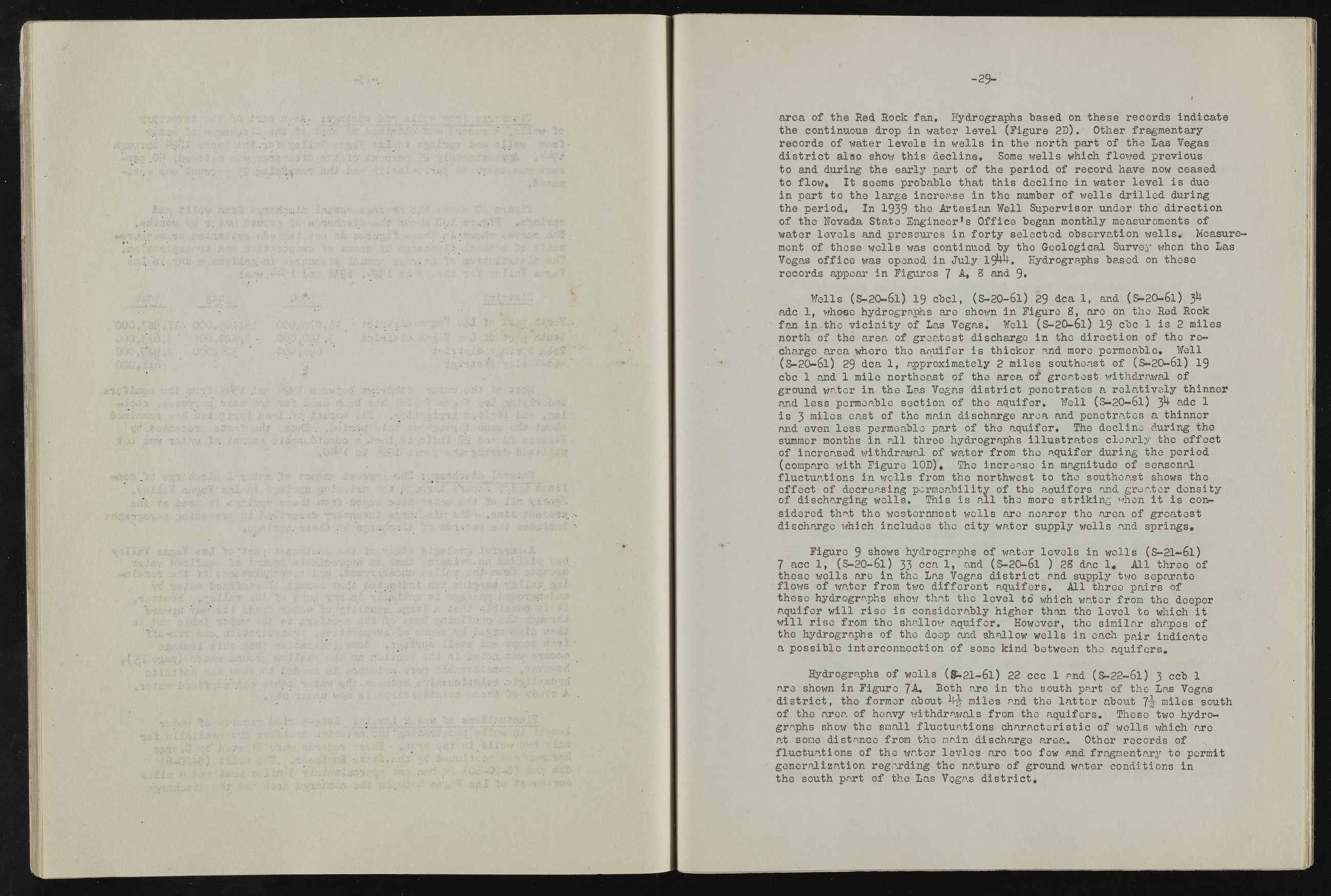Copyright & Fair-use Agreement
UNLV Special Collections provides copies of materials to facilitate private study, scholarship, or research. Material not in the public domain may be used according to fair use of copyrighted materials as defined by copyright law. Please cite us.
Please note that UNLV may not own the copyright to these materials and cannot provide permission to publish or distribute materials when UNLV is not the copyright holder. The user is solely responsible for determining the copyright status of materials and obtaining permission to use material from the copyright holder and for determining whether any permissions relating to any other rights are necessary for the intended use, and for obtaining all required permissions beyond that allowed by fair use.
Read more about our reproduction and use policy.
I agree.Information
Digital ID
Permalink
Details
Member of
More Info
Rights
Digital Provenance
Publisher
Transcription
area of the Red Rock fan, Eydrographs based on these records indicate the continuous drop in water level (Figure 2D). Other fragmentary records of x*ater levels in wells in the north part of the Las Vegas district also show this decline. Some xvells which flowed previous to and during the early part of the period of record have now ceased to flow, It seems probable that this decline in water level is due in part to the large increase in the number of wells drilled during the period. In 1939 the Artesian Well Supervisor under the direction of the Nevada State Engineer’ s Office began monthly measurements of water levels and pressures in forty selected observation wells. Measurement of those wells was continued by the Geological Survey \tfhen the Las Vegas office was opened in July 19^+, Eydrographs based on these records appear in Figures J A, 8 and 9» Wells (S-20-61) 19 cbcl, (S-20-61) 29 dca 1, and (S-20-6l) 3U adc 1, whose hydrographs are shown in Figure 8, are on the Red Rock fan in.the vicinity of Las Vegas, Well (S-20-61) 19 ebe 1 is 2 miles north of the area of greatest discharge in the direction of the recharge area where the aquifer is thicker and more permeable, Well (S-20~6l) 29 dca 1, approximately 2 miles southeast of (S-20-6l) 19 ebe 1 and 1 mile northeast of the area of greatest withdrawal of ground water in the La,s Vegas district penetrates a relatively thinner and less permeable section of the aquifer. Well (S-20-61) 3^ at^c ^ is 3 miles east of the main discharge area and penetrates a thinner and even less permeable part of the aquifer. The decline during the summer months in all three hydrographs illustrates clearly the effect of increased withdrawal of water from the aquifer during the period (compare with Figure 10D), The increase in magnitude of seasonal fluctuations in wells from the northwest to the southeast shows the effect of decreasing permeability of the aquifers and greater density of discharging wells. This is a ll the more striking when it is considered that the westernmost wells are nearer the area of greatest discharge which includos the city water supply wells and springs. Figure 9 shows hydrographs of water levels in wells (S-21~6l) 7 acc 1, (S-20-61) 33 cca 1» an(I (S-20-61 ) 28 dac 1, All three of these wells are in the Las Vegas district and supply two separate flows of water from two different aquifers. All throe pairs of these hydrographs show that the level to which water from the deeper aquifer will riso is considerably higher than the level to which it will rise from the shallow aquifer, Eowever, the similar shapes of the hydrographs of the deep and shallow wells in each pair indicate a possible interconnection of some kind botween the aquifers, Eydrographs of wells (5-21-61) 22 ccc 1 and (S-22-6l) 3 ccb 1 are shown in Figure JA, Both are in the south part of the Las Vegas district, the former about miles and the latter about 7lr miles south of the area, of heavy withdrawals from the aquifers. These two hydro-gra. phs show the small fluctuations chexacteristic of wells which axe at some distance from the main discharge area. Other records of fluctuations of the water levies are too few and fragmentary to permit generalization regarding the nature of ground water conditions in the south paxt of the Las Vegas district.

